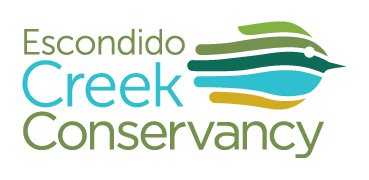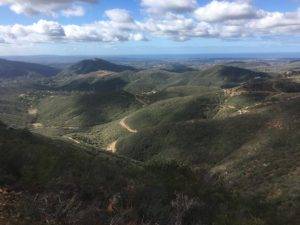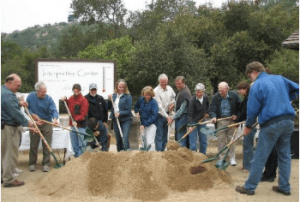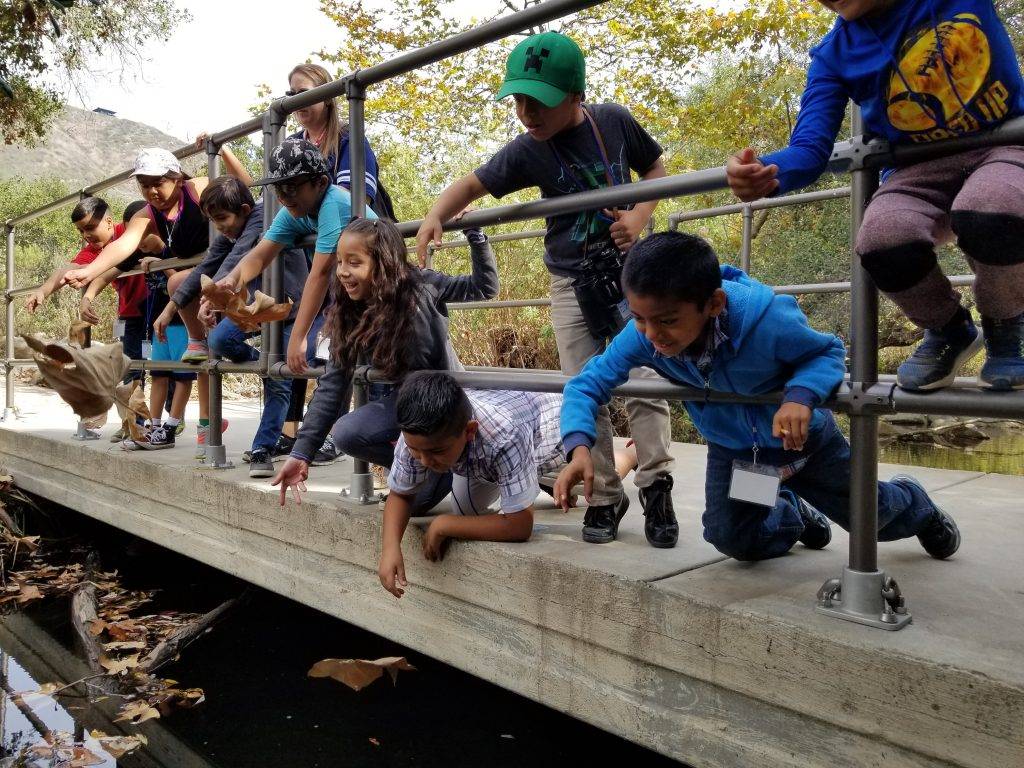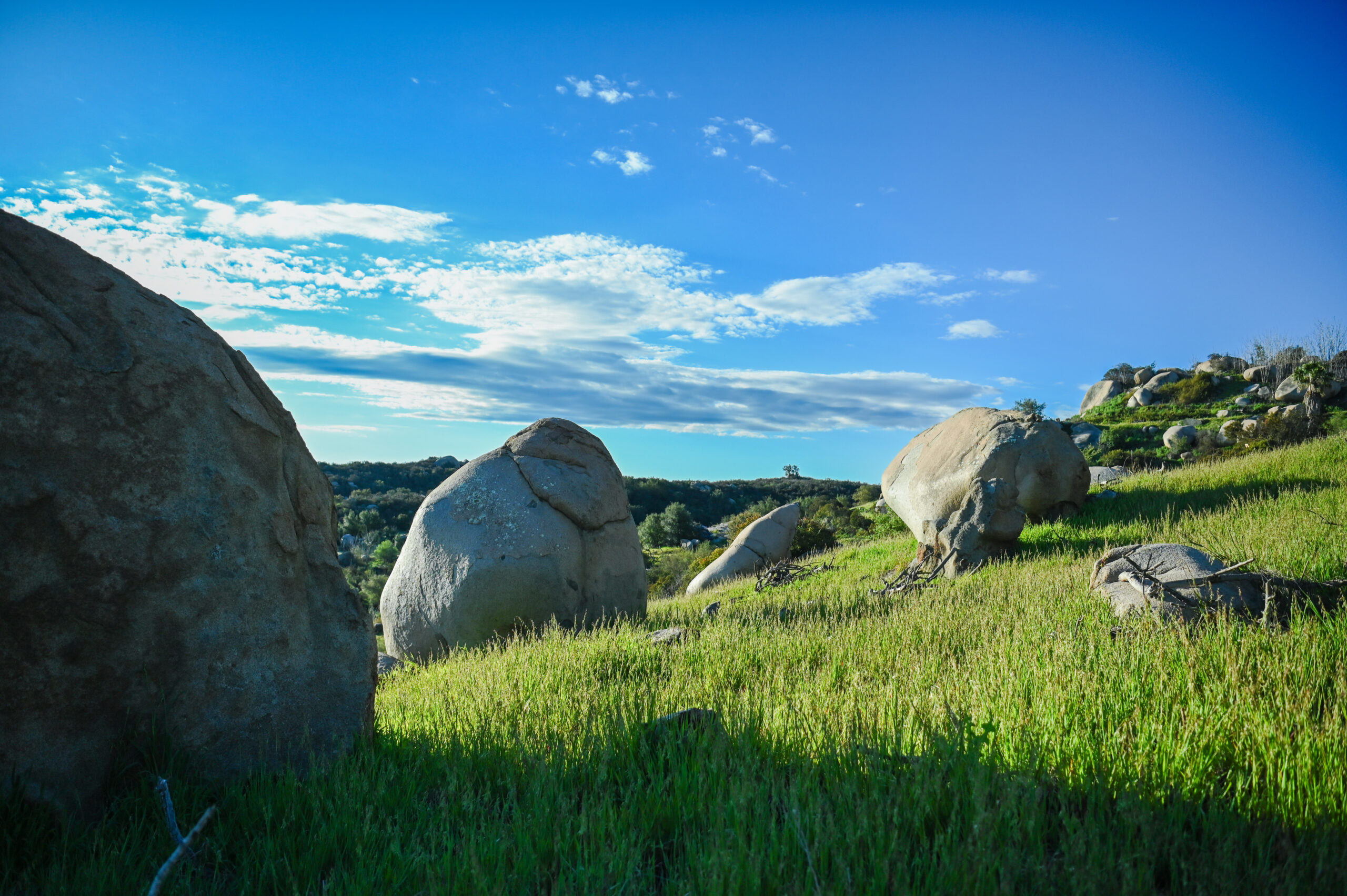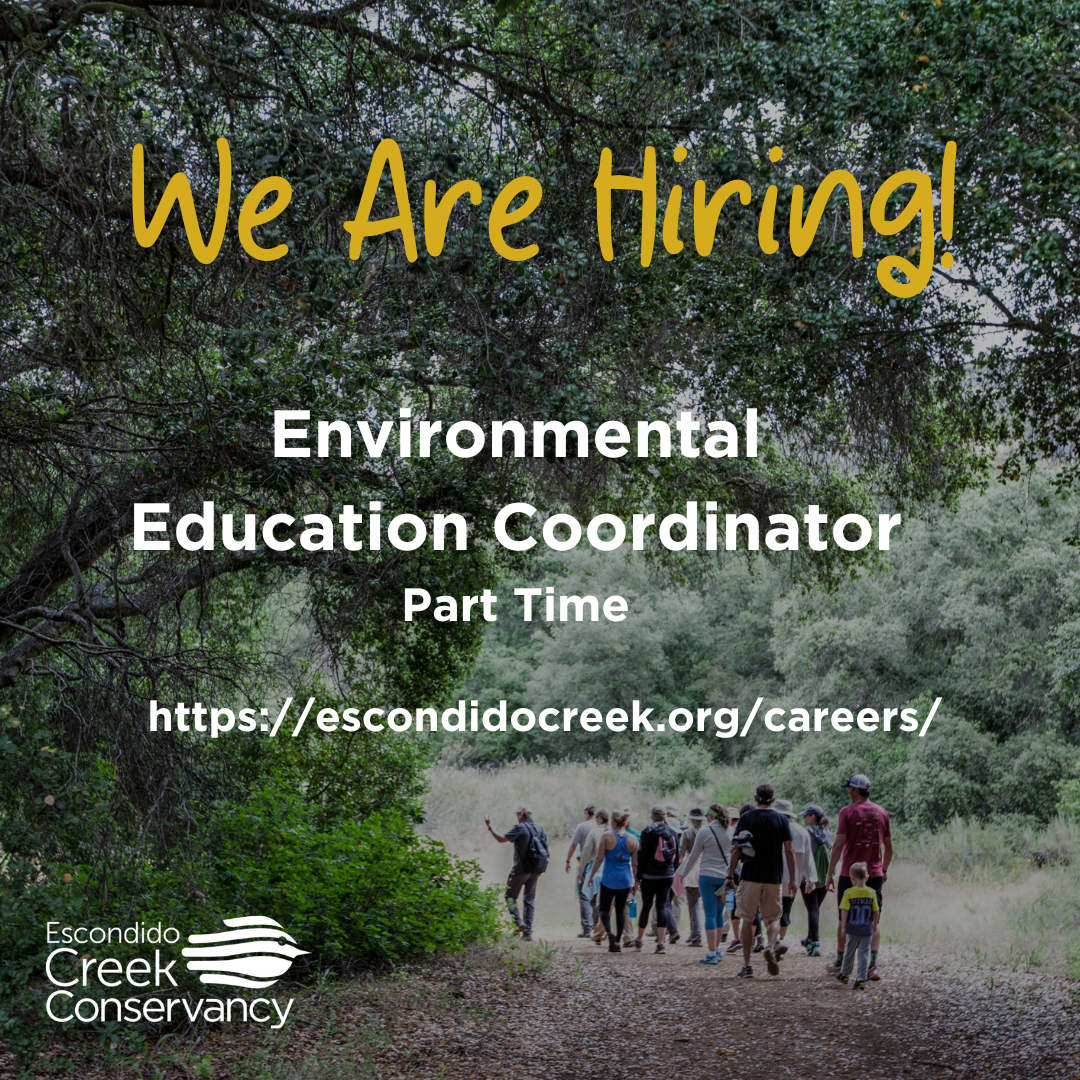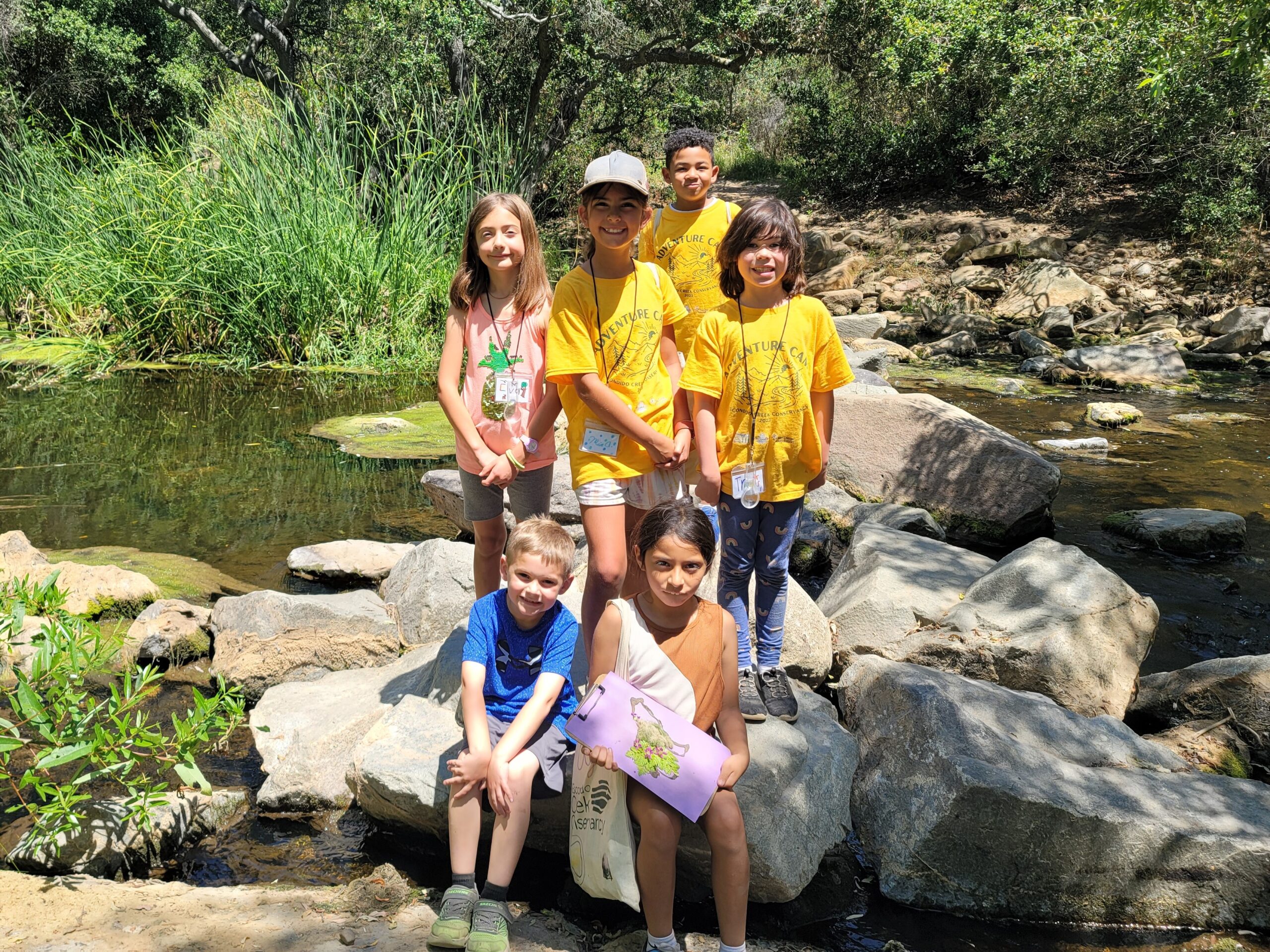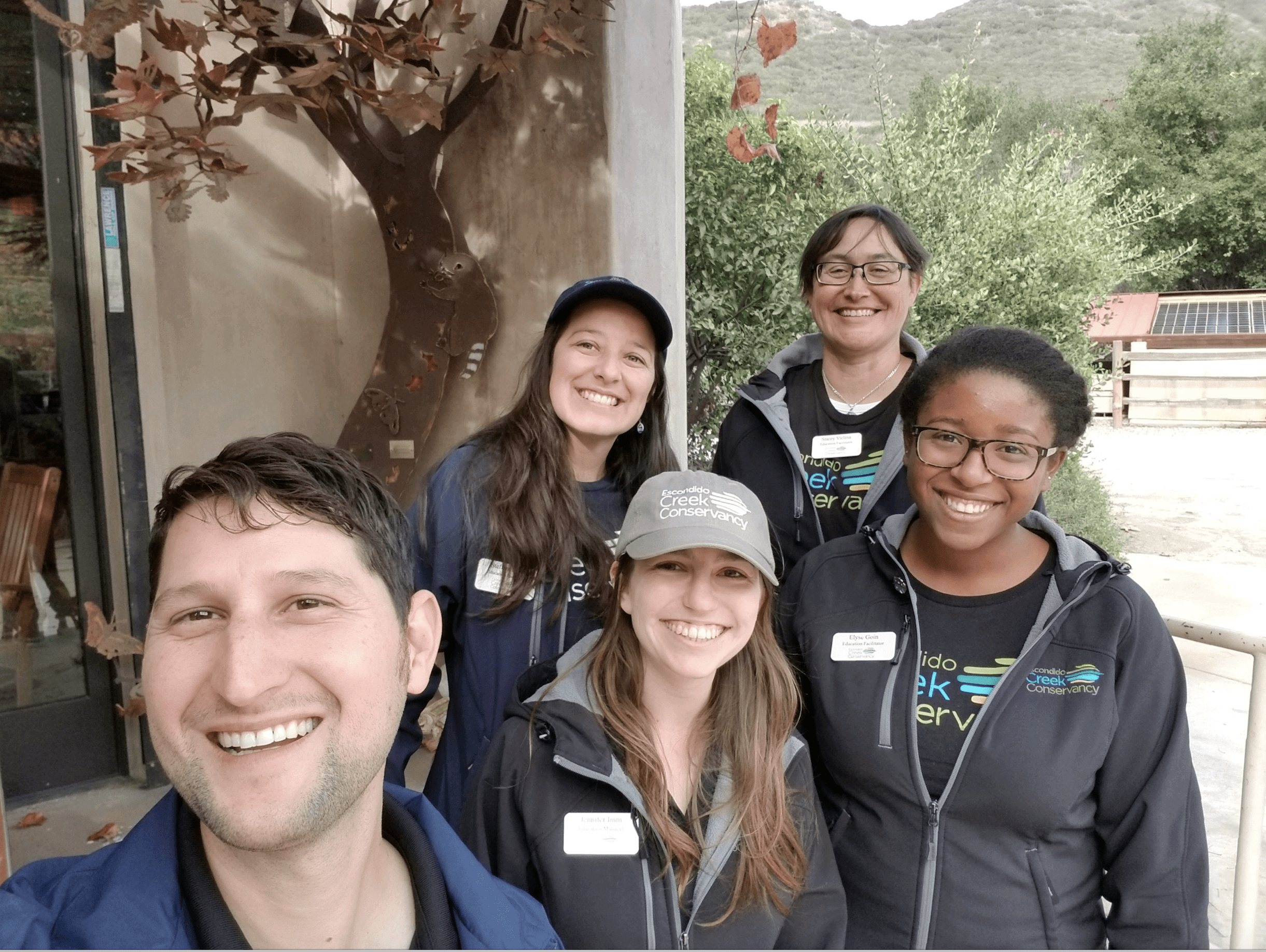
The Evolution of Our Education Department
Do you love nature?
If so, chances are that it’s because you were exposed to the outdoors at an early age. While we may remember climbing trees, splashing in creeks, or catching lizards, the sad reality is that many students in our modern age aren’t making these kinds of memories. In urban areas like Escondido, it isn’t uncommon for children to reach their teenage years without ever visiting a nature park, a beach, or a natural creek. We’re so happy to report that, at least in Escondido, this is no longer the case! Our education department has come a long way over the years, and we’d like to briefly walk you through the past, present, and future of our efforts.
 1991–2009: In the Beginning, There Was Land
1991–2009: In the Beginning, There Was Land
When the Escondido Creek Conservancy (Conservancy) incorporated as a non-profit in 1991, the primary focus was the protection and enhancement of the watershed through land acquisition. While conserving land remains a top priority, we’ve since realized that creating preserves is only half the battle. We need to engage the next generation to care about nature if we want to protect the future of this incredible planet. Thus, in 2009, our education department was born!
 2009–2014: If You Build It, They Will Come
2009–2014: If You Build It, They Will Come
The Conservancy and the Olivenhain Municipal Water District formed a unique partnership to raise funds to build an Interpretive Center in the Elfin Forest Recreational Reserve. We raised $565,000 in private donations to fund over 90% of the cost of the Center, which opened in June 2009. Designed by renowned local artist, James Hubbell and his architect son, Drew, the Center is more than just a building—it’s a work of art inspired by nature. This Center would not have been possible if it were not for the generosity of our donors. Two of those people were Myron and Joan Eichen. They believed it is critical that people get out into nature to explore, particularly as children.
The Elfin Forest and its Interpretive Center served as the exclusive staging area of our education efforts in those early years. In those days, the Conservancy had no education staff or home-grown programming. Instead, we hosted the programs from other organizations like the San Diego Zoo, which were supported by our active volunteer Board and docents. Despite minimal resources, we helped bring approximately 250 students annually on outdoor field trips to the Elfin Forest, and an average of 8,000 individuals per year visited the Interpretive Center during this period. The Center remains an invaluable community resource in the region.
2014–2019: The Staff Era and a Plan to Guide Us
In 2014, generous seed funding from the Charles H. Stout Foundation and a local family—the Baumgartners—enabled us to hire an Education Manager, our first staff member dedicated solely to education. We were then able to create our own outdoor education curricula, expand our programs, and extend our reach. This was the beginning of a new era as our education department slowly shifted from volunteer-driven programs to staff-driven ones. But despite this shift, to this day our programs still rely on support from our incredible volunteers, and proudly so.
By 2016, we unveiled our first-ever Education Strategic Plan. This 5-year Plan was created with input from local teachers, conservancies, indigenous representatives, community leaders, and other valued stakeholders. It serves as a roadmap for our environmental education programming, which galvanizes the public to value wildlife and wild places like the land we and all our supporters have worked to protect. The Plan targets our local watershed and is the embodiment of thinking globally and acting locally.
 Fast forward to 2019, and our education department now includes five staff members (two full-time and three seasonal). From 224 students served during the 2013-14 school year to 5,033 students we provided outdoor experiences for in the 2018-19 school year, in addition to thousands of adults and families now served annually through our education programs for the general public, our impact has increased by leaps and bounds.
Fast forward to 2019, and our education department now includes five staff members (two full-time and three seasonal). From 224 students served during the 2013-14 school year to 5,033 students we provided outdoor experiences for in the 2018-19 school year, in addition to thousands of adults and families now served annually through our education programs for the general public, our impact has increased by leaps and bounds.
A few other key highlights from 2014-2019 include:
In 2016 we launched an Escondido chapter of the Trout in the Classroom program—with funding from SDG&E—where students raise and release trout and learn about water quality in the process. Ten schools and more than 1,000 students now participate annually.
In 2018 we began a Conservation Fellowship program at the high school level, where we mentor students, introduce them to environmental issues, and then guide them as they develop and implement a project to address an environmental problem of their choosing.
As of 2018, together with a conservation consortium that includes the San Diego Zoo and Nature Collective, we’re now collectively providing outdoor education for all 3rd through 5th grade children in the Escondido Union School District. This strategy helps us and our partners accomplish significantly more together than we ever could have on our own, and creates a huge impact in our local communities.
 Every school year we offer project-based learning opportunities, which give students hands-on experience with real-world conservation projects. Students have created and installed bat boxes, birdhouses, pollinator gardens, and more through our program. Every year students participate in service-learning opportunities, from restoration projects for children like invasive removal and native plantings to career-building opportunities where college students gain experience while helping facilitate outdoor programs. We produced 17 free nature-centered exhibits at the Elfin Forest Interpretive Center. Examples include Sounds of the Watershed, Coexisting with Coyotes, Creatures of the Creek, First Peoples of the Watershed, Fire & Rebirth, and more. These exhibits have been viewed by more than 60,000 visitors.
Every school year we offer project-based learning opportunities, which give students hands-on experience with real-world conservation projects. Students have created and installed bat boxes, birdhouses, pollinator gardens, and more through our program. Every year students participate in service-learning opportunities, from restoration projects for children like invasive removal and native plantings to career-building opportunities where college students gain experience while helping facilitate outdoor programs. We produced 17 free nature-centered exhibits at the Elfin Forest Interpretive Center. Examples include Sounds of the Watershed, Coexisting with Coyotes, Creatures of the Creek, First Peoples of the Watershed, Fire & Rebirth, and more. These exhibits have been viewed by more than 60,000 visitors.
Beyond the numbers, there are real children who we’re helping to have transformative experiences in nature. All of these programs taken together help us build stewards for a better watershed and, by extension, a better world.
2020 & Beyond: The Future of Education
Now 10 years old, this is an exciting time in the history of the Escondido Creek Conservancy’s education department. In June 2019, we announced the formation of the Eichen Education Fund, which will help finance our education department and improve the long-term sustainability of our programs. Donating to this fund helps us achieve our vision for the future. Big plans lie ahead! In 2020 we begin developing a new Education Strategic Plan that will guide the next five years of our programming. From building a new science field station on our Mountain Meadow Preserve, to advocating for new legislation so that outdoor education becomes a right for all children attending public schools across the state of California, we want you to dream big with us!

